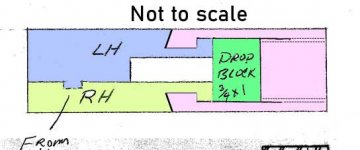
This is an Idea, something that I can make.
But....every time I build a wildcat, it ends up being a 375 H&H or more powerful.
I have a Ruger and Falling Block Works "J". I need one just slightly bigger than the "J".
It uses a 3/4" x 1" block.
My original intent was to use 4140 pre-hard, but that was for 30/06 class cases.
This is for my own personal use, it will have a seam down the sides.
The front, drop block can be machined with a custom end mill.
So, my question is, Is 4140 pre-hard strong enough.
I have a professional heat treat only an hour away, if needed.
Suggestions Please.
Retired Tool and Die Mold Maker



